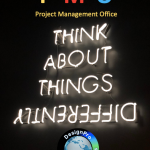 If your working with hydrogen or ammonia for example in a “green”, “blue” or “grey” environment and you understand this video below then that’s terrific, alternatively if you find the whole hazardous area system confusing then it’s time to talk to us
If your working with hydrogen or ammonia for example in a “green”, “blue” or “grey” environment and you understand this video below then that’s terrific, alternatively if you find the whole hazardous area system confusing then it’s time to talk to us
info@designproconsultancy.com
or schedule a free consultation
Interpreting Hazardous Locations Markings for IECEx equipment



















